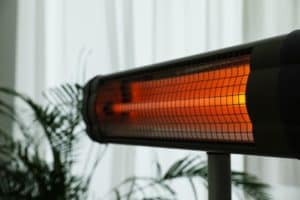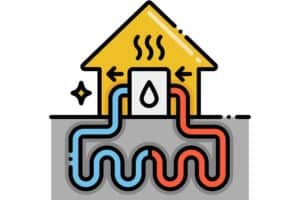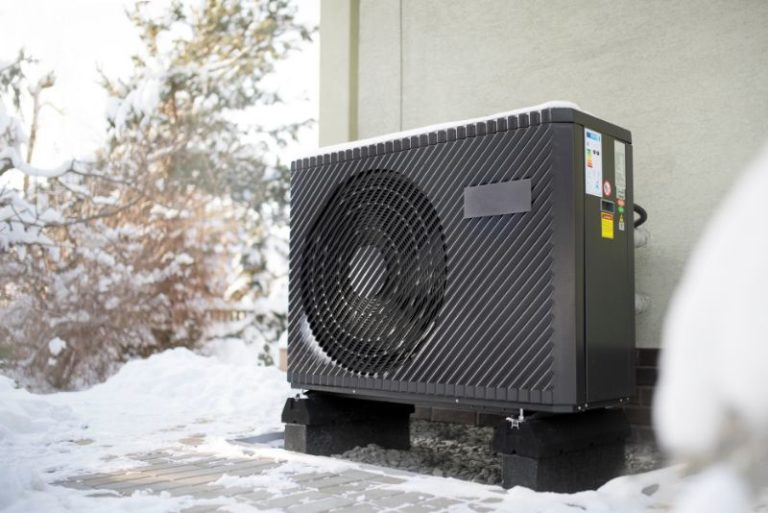Staying warm in the winter shouldn’t mean skyrocketing electricity bills. With energy costs on the rise, many homeowners are searching for the most efficient way to heat their homes without breaking the bank. Which heating system uses the least electricity? Choosing the right system helps save energy and money. Keeping your home warm without high electricity costs is important. Knowing which heating systems use the least power can help you save money in the long run. By understanding the most energy-efficient heating options, you can make an informed decision that balances comfort and cost. Investing in the right system not only reduces electricity usage but also contributes to a more sustainable home.
In this article, we’ll explore the most energy-efficient heating options and determine which one uses the least electricity.
Heat Pumps: The Most Energy-Efficient Option
Heat pumps are among the most energy-efficient heating systems because they transfer heat instead of generating it. This allows them to provide more heat output for every unit of electricity consumed.
Air Source Heat Pumps (ASHPs)
These systems extract heat from the outdoor air and transfer it indoors. They work well in mild to moderate climates and can be up to 300% efficient, meaning they produce three units of heat for every unit of electricity consumed. However, their efficiency drops in extremely cold temperatures.
Ground Source Heat Pumps (GSHPs)
Also known as geothermal heat pumps, GSHPs draw heat from the stable underground temperature. These systems are even more efficient than ASHPs, offering efficiency rates of up to 400%, making them an excellent choice for long-term savings.
Infrared Heaters: Targeted Heating With Low Energy Consumption

Infrared heaters use radiant heat to warm objects and people directly instead of heating the air. This makes them an energy-efficient option for small spaces or targeted heating. While they are not ideal for whole-house heating, they are a cost-effective way to reduce electricity consumption in specific areas.
Electric Resistance Heaters: Least Efficient but Widely Used
Electric resistance heaters, such as baseboard heaters and space heaters, convert electricity directly into heat. While they operate at 100% efficiency, meaning all the electricity consumed is turned into heat, they are less efficient than heat pumps, which can generate more heat with the same amount of electricity. These heaters are best for occasional or supplemental heating rather than primary heating systems.
Alternative Low-Electricity Heating Solutions
If you’re looking beyond traditional electric heating systems, consider these alternative low-energy heating options:
Solar Heating
Solar heating systems can be classified into active and passive types. Active systems use solar panels to collect and store heat, distributing it through the home using fans or pumps. Passive solar heating relies on building design elements, like south-facing windows, to naturally collect and store heat.
Pellet Stoves
These burn compressed wood pellets to generate heat efficiently. They provide a more environmentally friendly alternative to electric resistance heaters and are generally cheaper to operate over time.
Hydronic Radiant Heating
This system circulates heated water through floors, providing consistent warmth. It can be powered by boilers, solar water heaters, or even geothermal energy, making it a versatile and energy-efficient choice.
Hybrid Heating Systems
For even greater efficiency, homeowners can combine heating solutions:
- Dual-Fuel Systems: A heat pump can be paired with a gas furnace, automatically switching to gas when temperatures drop too low for the heat pump to work efficiently.
- Heat Pumps + Solar Panels: Using solar panels to power a heat pump significantly reduces electricity costs and reliance on the grid, making it a sustainable option.
Which Heating System Uses The Least Electricity in the Long Run?

To give homeowners a better financial picture, here’s how different heating systems compare over a 5-10-year period:
Ground-Source Heat Pumps
- Installation Cost: $10,000 – $25,000
- Annual Operating Cost: $500 – $1,500
- Long-Term Savings: Significant due to high efficiency
Air Source Heat Pumps
- Installation Cost: $3,000 – $10,000
- Annual Operating Cost: $600 – $1,800
- Long-Term Savings: High, but efficiency drops in cold climates
Infrared Heaters
- Installation Cost: $50 – $500 (per unit)
- Annual Operating Cost: $200 – $700
- Long-Term Savings: Low due to localized heating
Electric Resistance Heaters
- Installation Cost: $50 – $1,000
- Annual Operating Cost: $1,000 – $2,500
- Long-Term Savings: Poor due to high electricity consumption
Addressing Common Misconceptions
Many homeowners believe electric resistance heaters are the best choice because they are 100% efficient. However, they fail to account for the fact that heat pumps provide far more heat per unit of electricity. Additionally, some believe heat pumps don’t work well in cold climates, but modern advancements have improved their performance, allowing them to operate efficiently even in freezing temperatures. Heat pumps can now function effectively with supplemental heating or dual-fuel systems, making them a reliable option for colder regions.
Pros & Cons of Each Heating System
A simple breakdown of the benefits and drawbacks of each heating option:
Heat Pumps:
✅ High efficiency (300-400%)
✅ Lower electricity costs
❌ Higher installation costs
Infrared Heaters:
✅ Great for targeted heating
✅ No heat loss through ducts
❌ Not ideal for whole-home heating
Electric Resistance Heaters:
✅ Low initial cost
❌ High operating costs
❌ Least energy-efficient option
Solar Heating:
✅ Sustainable and cost-effective long-term
❌ Requires initial investment in solar panels
Pellet Stoves:
✅ More affordable than electric resistance heating
❌ Requires fuel storage and maintenance
Hydronic Radiant Heating:
✅ Provides even heating
✅ Works with multiple energy sources
❌ High upfront installation cost
Conclusion
A ground-source heat pump is the most efficient choice if you’re looking for a heating system that uses the least electricity. However, air-source heat pumps can still provide excellent energy savings for those in milder climates. Evaluating your home’s insulation before investing in a heating system can help maximize efficiency. Checking for local rebates on energy-efficient heating systems may also reduce upfront costs.
By choosing the right heating system, you can significantly reduce your electricity usage and lower your energy bills while keeping your home warm and comfortable. Additionally, incorporating smart thermostats and energy-efficient practices, such as sealing air leaks and using thermal curtains, can further enhance your heating system’s performance. Investing in an energy-efficient heating solution not only reduces electricity consumption but also contributes to a more sustainable and environmentally friendly home.



